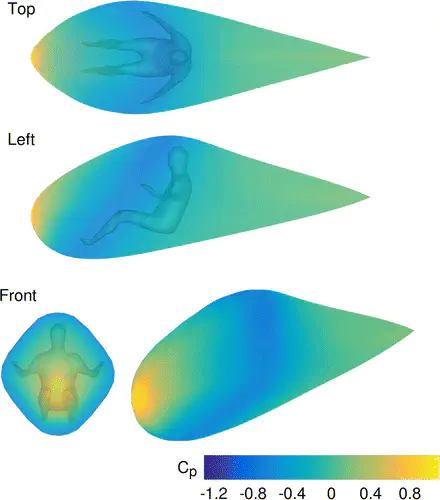Flexible Formulation of Spatial Integration Constraints in Aerodynamic Shape Optimization
 Optimized aerodynamic fairing for a human avatar
Optimized aerodynamic fairing for a human avatar
Abstract
In aircraft design, spatial integration limits aerodynamic and structural performance. While the outer mold line shape determines aircraft aerodynamic characteristics, aircraft systems and passengers or payloads must fit inside. Emerging categories of aircraft, such as electric aircraft, are likely to experience new and critical spatial integration challenges.Existingaerodynamic shape optimization toolsuse anarrowly defined setof geometric constraints. However, no known aerodynamic optimization framework can handle spatial integration constraints derived directly from three-dimensional (3-D) geometry. A general geometric constraint formulation based on triangulated 3-D geometry is proposed. The constraint consists of two metrics: the length of the intersection curve(s) between any two objects, and the Kreisselmeier–Steinhauser function aggregated minimum distance. The proposed implementation of the intersection and distance computations is fast and analytically differentiable with respect to geometric design variables, making it suitable for efficient gradient-based optimization. The constraint formulation is validated using three Reynoldsaveraged Navier–Stokes-based aerodynamic shape optimization problems: a 2-D fairing design problem, a 3-D fairing design problem, and the design of an aeroshell to surround a human avatar. It is shown that this approach is robust and efficient, enabling the aerodynamic optimization of bodies containing objects with arbitrary shapes.